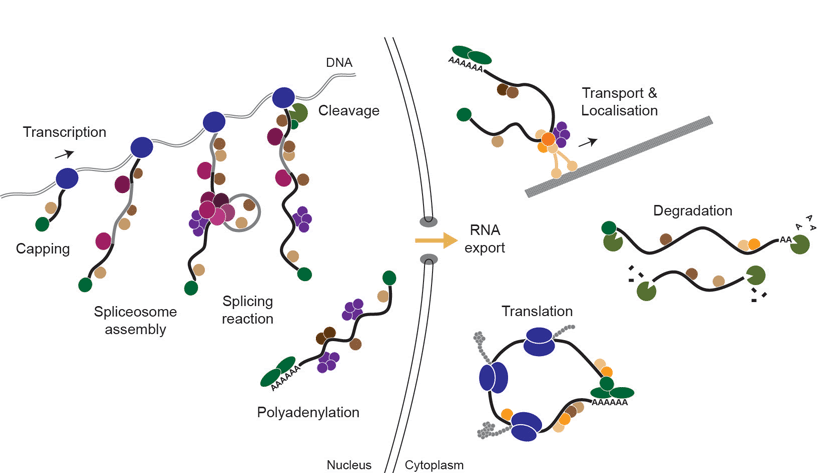Learning the Molecular Mechanisms of RNA Regulation & Genomics in Human (Patho)physiology
RNA- and DNA-binding proteins are fundamental regulators of gene expression across transcriptional and posttranscriptional levels. We aim to elucidate the functions of these proteins using bioinformatic analyses. RNA-binding proteins are critical players in the posttranscriptional control of gene expression. Their functional impact ranges from the alternative splicing and polyadenylation of pre-mRNAs in the nucleus to the subcellular localisation and translation of mRNAs in the cytoplasm. DNA-binding proteins are essential for regulating gene expression at the transcriptional level, playing pivotal roles in processes such as DNA replication, repair, and chromatin remodelling. Numerous diseases are characterised by dysregulated RNA- or DNA-binding proteins and massively altered transcriptome patterns, particularly prominent in neurodegeneration and cancer. In the era of functional genomics, high-throughput sequencing, and machine learning, we are now able to address these processes at an unprecedented resolution and scale.











